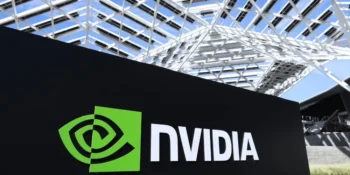The global demand for lithium-ion batteries (LIBs) is surging as the world steers towards achieving carbon neutrality. These batteries power everything from electric vehicles to portable electronics. However, the current recycling methods used by lithium-ion batteries are in dire need of enhancement, particularly in terms of environmental sustainability, cost-effectiveness, and efficiency. A groundbreaking solution has emerged in response to this pressing issue: the mechano-catalytic method known as contact-electro-catalysis.
The Contact-Electro-Catalysis Method
The contact-electro-catalysis method represents a breakthrough, leveraging the power of radicals generated through contact electrification to facilitate the leaching of metals. This process operates synergistically under the influence of ultrasonic waves, enhancing the efficiency of metal extraction. This innovative method incorporates SiO2 as a recyclable catalyst, adding to its eco-friendliness and cost-effectiveness. This inclusion reinforces the sustainability quotient of the approach, making it a promising contender in the quest for efficient lithium-ion battery recycling.
Efficiency in Lithium Cobalt (III) Oxide Battery Recycling
Within the realm of lithium cobalt (III) oxide batteries, contact-electro-catalysis demonstrates outstanding efficiency. It achieves a noteworthy leaching efficiency of 100% for lithium and an impressive 92.19% for cobalt at a temperature of 90°C within a concise 6-hour timeframe. This remarkable efficiency not only showcases the potential of this method but also underscores its ability to revolutionize the recycling of these widely utilized batteries, addressing the environmental concerns associated with their disposal.
Efficiency in Ternary Lithium Battery Recycling
The application of contact-electro-catalysis in recycling ternary lithium batteries yields equally impressive outcomes. At a temperature of 70°C and within the same 6-hour window, the method attains substantial leaching efficiencies: 94.56% for lithium, 96.62% for nickel, 96.54% for manganese, and an astounding 98.39% for cobalt. These remarkable figures emphasize the versatility and effectiveness of this method in efficiently recovering valuable metals from various types of batteries, adding to its potential for sustainable resource recovery.
The Promise of Contact-Electro-Catalysis
The innovative approach of contact-electro-catalysis holds promise on multiple fronts. Primarily, it aligns seamlessly with the global transition towards sustainable practices, providing a green solution to the mounting challenge of lithium-ion battery disposal. Secondly, its high efficiency ensures that valuable metals are extracted effectively, reducing waste and minimizing environmental impact. Lastly, the cost-effectiveness of this method positions it as a viable and economically sound option for lithium-ion battery recycling, further solidifying its potential to revolutionize the recycling landscape.
As the demand for lithium-ion batteries continues to surge in the pursuit of carbon neutrality, recycling methods must evolve to meet the challenge. Contact-electro-catalysis, with its radical-based leaching and SiO2 catalyst, stands as a beacon of hope in lithium-ion battery recycling. Its outstanding performance in recovering essential metals from lithium cobalt (III) oxide and ternary lithium batteries signifies a promising future where lithium-ion battery recycling becomes both sustainable and economically viable. This method addresses the exponentially growing demand for lithium-ion battery production while minimizing its environmental footprint.









